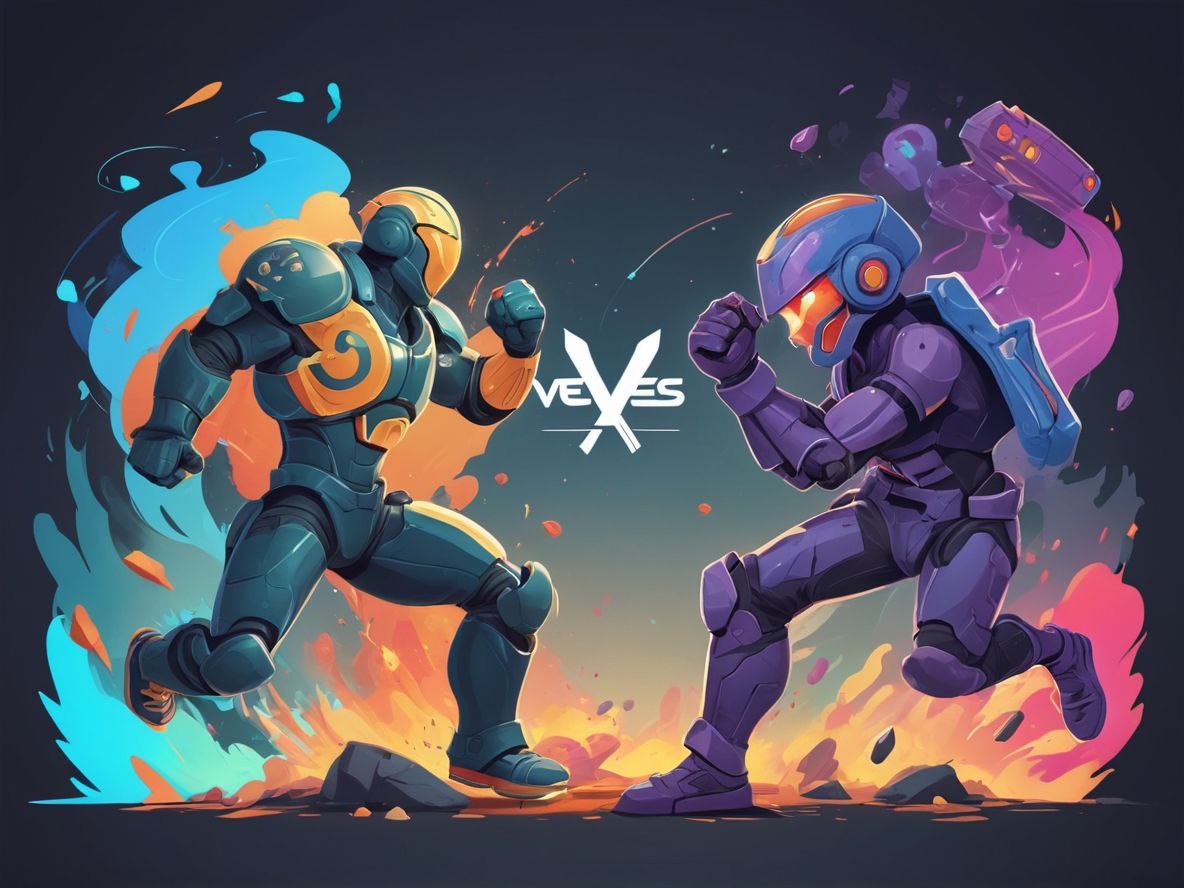- Introduction
- Games
- Interactive Communication Software
- Conclusion
Introduction
The Metaverse, as a three-dimensional virtual world, has garnered significant attention from users. This cutting-edge platform offers a unique and realistic experience compared to conventional interactive software and games that have a large user base today. The distinctive capabilities and features of the Metaverse provide users with opportunities for greater and more vibrant collaboration and interaction. It allows for creativity, new content creation, and the ability to create and experience diverse and engaging environments.
Games
- Open-World Games
- Metaverse Games
There are various types of games available globally. Most of these games are either designed around thought, creativity, and abstract concepts (like old-fashioned rigid games) or consist of graphical interfaces, ranging from non-intelligent to intelligent, enhancing engagement, difficulty, and concentration in gameplay.
As these interfaces evolve algorithmically, they transition from non-intelligent to intelligent. They aim to provide services between game stages and beyond, offering platforms where game changes and strategies can be remarkably transformed.
Initially, game consoles recognized the need to integrate the game processor with the game itself, leading to the development of various generations of hardware game consoles. With the advent of ubiquitous hardware like computers and mobile phones, different platforms attempted to offer game content both as consoles and software versions, allowing users to experience the same game on multiple devices. For instance, a game named “X” could have versions for computers, mobiles, and game consoles like PlayStation, increasing its penetration among users. However, in Web 2.0, providing a software game without utilizing hardware (even with creative graphic designs in advanced versions) was impossible.
Attempts to provide 3D games in Web 2.0 were delayed until 2018 due to a lack of innovative software and hardware infrastructure. The leading graphical games on the internet were limited to programming platforms based on Flash and 2D graphics, and offering graphical environments like game consoles was not feasible.

Significant efforts in 3D interactive games in Web 2.0 can be highlighted, such as:
- Counter-Strike: An interactive web-based game with low graphics and limited accessibility, allowing users to engage in group or one-on-one battles.
- Clash of Clans: A web-based strategic game with low graphics but captivating stories, which introduced metaverse concepts to users. It can be considered an early attempt to achieve ecosystem concepts in the metaverse world, establishing the idea of earning income through gaming.
As mentioned, these games had pre-defined strategies and scenarios, and increasing their graphics and 3D formats often reduced their storylines, limiting their release in the secure web structure due to potential economic failures. Consequently, a new concept, “open world,” emerged in game consoles, significantly widening the gap between web and console games.
Open-world games were designed to give users a sense of maneuvering in a vast, dreamlike game environment, both in 2D and 3D. However, these games had specific scenarios, and if users deviated from these scenarios, they could create new ones (missions) and immerse themselves in the console’s 3D game world. However, avatar growth in these games was contingent on completing the game’s scenario, limiting character development if the scenario was not completed.
The emergence of 4K and 8K technologies introduced a new level of color integration and design, challenging different hardware versions, each requiring specific versions for their hardware from game companies. Additionally, interaction issues persisted, as massive online multiplayer interactions were limited to predetermined or strategic interactions, such as:
- PUBG
- GTA
- Sims
With hardware advancements and the rise of decentralized transactions in the blockchain world, hardware capabilities increased, shifting company aspirations towards server-based game distribution instead of individual hardware. The concept of consoles is gradually fading, with games increasingly offered in metaverse formats. Metaverse technology introduces possibilities unavailable in consoles, such as:
- Interaction among a large number of users
- Open-world scenarios with completely open narratives
- Building and selling in global markets
- Defining businesses in the Metaverse and earning targeted income
- Developing console games in the Metaverse and providing Metaverse versions based on 4K, 8K graphics
- Chat and text chat interaction for maximum user communication
- Gamification features for developing games and serious gaming for adults
- Payments with various tokens and cryptocurrencies for creating material and intellectual ownership in the blockchain world
- Connecting to other metaverse platforms globally, fostering interaction among participants, which is not possible in user-level console games, and only achievable through organizational agreements.
Interactive Communication Software
Interactive communication software refers to applications and platforms that allow users to interact simultaneously and bilaterally. These software options enable users to communicate effectively through chat, voice, and video. Examples include messaging apps like WhatsApp and Telegram, which facilitate instant text, voice, and video messaging.
Video conferencing software like Zoom, Microsoft Teams, and Google Meet allows users to hold live video meetings. Social media platforms like Facebook, Twitter, and Instagram offer interactive communication features, including private messaging, group formation, group chats, live education, and live conversations.

While interactive communication software like messaging apps and video conferencing tools offer numerous communication features, the Metaverse provides unique advantages that attract users compared to these software and platforms. One of the Metaverse’s significant advantages is the use of virtual reality (VR) technology, allowing users to experience a three-dimensional, high-graphic environment close to reality. In contrast, interactive communication software typically offers two-dimensional interactions, whereas the Metaverse’s 3D environment enhances user experience significantly.
In the Metaverse, users can interact in various ways through their digital avatars, including screen sharing, voice and video conversations, games, and social activities like education. This level of social interaction is more limited in interactive communication software, primarily confined to text messaging and voice and video calls.
Another advantage of the Metaverse is the creation of digital economic opportunities. Users can earn income through digital goods sales, services, and extensive virtual events. These economic opportunities are not available in interactive communication software, where users can only introduce and sell products or showcase services without a secure environment.
Overall, the Metaverse is not only used for social interactions but also for diverse and extensive education, commerce, entertainment, income generation, and hosting various events for all professions without age, time, or geographical restrictions. This diversity makes the Metaverse a multi-purpose platform that can meet different user needs. In contrast, interactive communication software like Google Meet and Zoom is primarily designed for video meetings and webinars with more limited applications.
Conclusion
In today’s world, Web 3 or the Metaverse has become a more practical and primary tool than existing traditional software. This platform, with its comprehensive features and modern technology, has created a more interactive and realistic space for users in various fields like games, event hosting, and interactive communication software. It offers a broad and multi-purpose platform for collaboration, education, and commerce. These features make the Metaverse a superior platform compared to interactive communication software and games, attracting more users of all ages and professions with its rapid advancement, and playing a significant role in communication.
Table of Contents
Toggle


One Response
Your blog post was like a guidebook that provided clear directions and valuable insights. I appreciated the practical advice you offered. To continue the journey, click here.